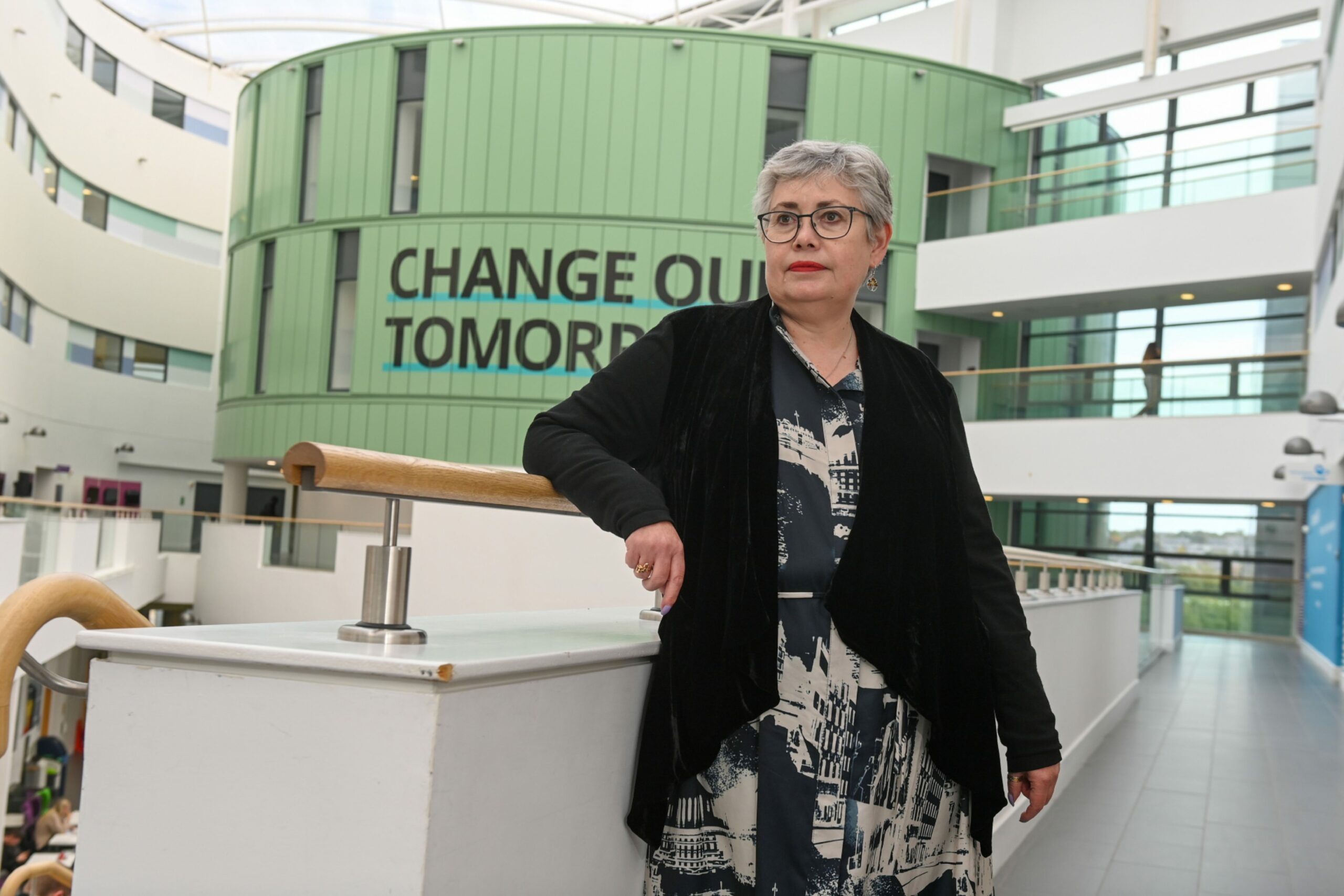In the old days, back in the 1970s and 1980s, there wasn’t much use for technological gizmos when you entered the school gates.
If you were studying maths or arithmetic, you might have a pocket calculator and those pursuing art qualifications occasionally brought cameras into class, but smartphones and iPads were the stuff of Star Trek and we were still in an age where chemistry experiments could reduce a classroom to something resembling a St Trinians film.
Yet, did it matter if we were operating with the tools at our disposal? When I look at modern schools grappling with such problems as social media abuse, cyber-bullying and mental health issues, I’m relieved we never had to worry about strangers trolling us and organising pile-ons on certain groups.
Especially in a climate where many youngsters spend so much time peering down at their mobile devices that you get the impression they might not know how to speak to another human being.
Lisa Kerr, the first female principal of Gordonstoun in Moray, has never been afraid to take a stand against what she regards as the increasingly pervasive influence of new technology on children in her care. In 2017, she and her colleagues “banned” the use of mobile phones during the school day and restricted the use of tablets and laptops.
It yielded some benefits, but she hasn’t stopped there. As Ms Kerr revealed in a column in The Times: “Last week, we went a step further. Other than for our sixth-formers, phones must be left in boarding houses during the school day and handed in overnight.
‘We want them to be safe’
“Teenagers may argue it’s their right to have their phones. But we want children to engage in real, not virtual relationships. We want them to hear the birdsong around them. We want them to be safe from algorithms that promote hate and harm.
“It’s lazy, irresponsible and dangerous not to place controls on young people’s access to an online world which they, and we, do not fully understand and cannot control”.
On first glance, this might seem a commonsense approach and there’s no denying how many adults, let alone those under 18, seem addicted to taking selfies, pinging texts off to BFs and BFFs, and immersing themselves in a virtual world.
But you can’t uninvent the wheel, nor pretend these devices don’t exist. Even as somebody who has never used Instagram or TikTok or feigned interest in AI, it’s evident a whole generation of students has grown up – exacerbated by Covid – adapting to a new normal of Zoom calls, online exams and dealing remotely with others.
Margaret Kirk, author
That is their everyday reality. In which light, people such as crime author Margaret Kirk are among those with reservations about the idea of suddenly implementing bans.
She said: “Ten years ago – maybe even five – I’d probably have agreed with Lisa Kerr. As well as overseeing children’s educational development, schools are where the next generation learns to participate in social interaction with their peers, outside of the circle of their immediate family and friends.
“If that interaction mainly takes place in an artificial online world, it’s not hard to imagine the difficulties that generation will face in the world of work, for example.
It sounds Canute-like behaviour
“But some changes in society have an air of inevitability about them. In 2023, mobile phones are so much part of the fabric of everyone’s daily life that an outright ban would be unfeasible, unrealistic, and I suspect, unenforceable.
“Clearly, no one is suggesting children should have unrestricted access to their mobiles in a school day. But locking away mobiles during lunch and break times and enforcing compulsory flower-sniffing and birdsong-appreciating sounds pretty Canute-like.
“And let’s not underestimate what that mobile could represent to a shy child, or one experiencing difficulties at school. It might be a precious connection to friends outwith the school, or access to a beloved family member when feeling upset or uncertain. Or, as a last resort – and no one wants to think about this, but it’s naive to suggest society’s ills have bypassed our schools – it could be a vital way to call for help.”
Prof Sarah Pedersen, Robert Gordon University
That last consideration was echoed by Prof Sarah Pedersen at Robert Gordon University, who has examined the use of social media in educational establishments.
She said: “I absolutely agree it is important to encourage young people to have a healthy and non-addictive relationship with mobile phones and all types of internet-enabled engagement. There is a role for schools to play in this as well as parents and carers.
“However, I am concerned an outright ban can only lead to use of mobiles going ‘underground’, potentially meaning there is no monitoring of young people’s use. Far better, in my view, to engage in ongoing discussion and education about the opportunities and challenges of the use of mobiles and social media.
Putting the genie back in the bottle
“We know, for some young people, it is easier to find supportive communities online rather than within the limitations of the classroom. This might be in relation to sexualities, dealing with bullying or mental health issues, or in relation to enthusiasms for particular sports, hobbies or interests those around them in real life do not share.
“Like it or not, young people are growing up in a hybrid world where engagement online is the norm. We need to educate them about dealing with the issues this provokes, and banning phones, to me, is trying to put the genie back into the bottle.”




